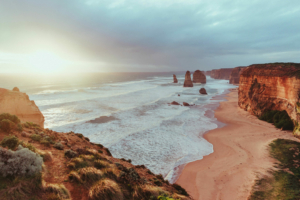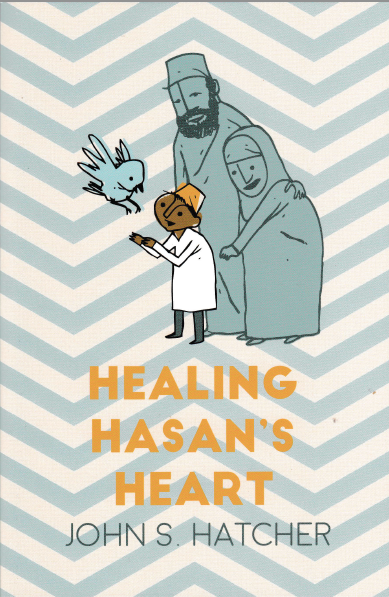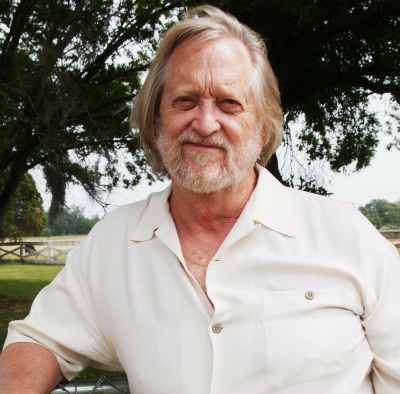Highlighting Australia
- As a proudly Australian initiative, we’re excited to showcase a collection of Australian stories, music, tributes and more.

Join activities, celebrations, study groups, spiritual empowerment and education programs for young people, and more.
Baha’i beliefs address essential spiritual themes for humanity’s collective and individual advancement. Learn more about these and more.

Featured in: Health, Healing & Overcoming Difficulties
At some point in our lives, we all suffer from illnesses of the body or the mind and we face tests and difficulties. This collection highlights resources dedicated to physical and spiritual health and well-being, healing, resilience and overcoming challenges.

You may be familiar with John Hatcher’s work. He is a seasoned and prolific writer with many Baha’i publications to his name. They range from books of poetry — both works of poetry penned by himself or about the poetry of Tahirih — to philosophical and theological treatises like From Sin to Salvation: The Ascent of the Soul, The Purpose of Physical Reality, and One Reality: The Harmony of Science and Religion. He has also written for junior youth, such as Ali’s Dream: The Story of Baha’u’llah, and its recently published sequel Healing Hasan’s Heart.
I was happy when John agreed to tell us about his new novel for junior youth, the ideas behind it, and his profession as a writer of Baha’i books.
Baha’i Blog: Thanks, John, for speaking to us! For those who may not know you, please tell us a little bit about yourself and your work as a writer.
I received my B.A. and M.A. degrees in English literature from Vanderbilt University and my Ph.D. from the University of Georgia. I am Professor Emeritus in English literature at the University of South Florida in Tampa where I served as Director of Graduate Studies in English and where I specialized in teaching medieval literature and creative writing.
I began writing in high school and first published my work in 1965. Since then I have published more than twenty-five books, including my own poetry, translations of poetry, novels, and scholarly studies. Most of my work stems from my experience as a Baha’i—I became a Baha’i in 1959 in Nashville, Tennessee—or else derives from my study of the Baha’i teachings and scripture.
Baha’i Blog: Wow! That’s a wonderful literary legacy! Can you tell us a little about Healing Hasan’s Heart? What inspired you to tell his story?
Back in the early 1970s, there appeared in The American Baha’i a request from the Baha’i Publishing Committee requesting books for children and youth. I immediately submitted a proposal for two projects because it had been my experience in teaching my own children and children’s classes that there were two major needs insofar as Baha’i literature was concerned.
The first was a clear and accessible chronological history of the Faith from its beginnings until the days of Abdu’l-Baha. I had so enjoyed studying the stories from the Old and New Testaments when I was a child growing up in the Methodist church, and I wanted Baha’i children and youth to have the same opportunity with Baha’i history.
The second book I proposed was a sort of Some Answered Questions for children and youth, a book that discussed the fundamental beliefs of the Faith and explained in clear terms the concept of progressive revelation and the nature of the Manifestations.
A year or more went by and I heard nothing back, so I went about my academic work until, in 1972, I went on pilgrimage. I am a history buff, and in addition to the spiritual power of that experience, I recalled again my desire to write about the history that occurred in the very places I visited. So when I returned, I became inspired to call Lois Goebel, then secretary of the Publishing Committee about my proposals.

She informed me that the committee had loved my ideas and had sent me a letter approving my going ahead with these projects a year before, a letter I had never received. But now that I had both the approval and the experience of pilgrimage, I was truly ready to begin.
The first book, the history of the Faith, took a great deal of research because at the time there was no straight forward chronological history for adults, other than God Passes By. About three years later I completed Ali’s Dream: The Story of Baha’u’llah which was first published in 1980 by George Ronald, and it has since gone through several editions and revisions, the last of which was the 2014 edition by the Baha’i Publishing Trust.
The second book was easier because it did not require so much research. I simply listed the major topics covered in Some Answered Questions, and, as with Ali’s Dream, had the topics discussed by fictional characters as a sequel to Ali’s Dream. This book was published also originally by George Ronald in 1988 with the title Conversations, but I was never satisfied with the work because I felt it needed to be more carefully revised.
After receiving an agreement with the Baha’i Publishing Trust a few years ago, I began a thorough revision of the work, and this was published in 2015 as Healing Hasan’s Heart. Changing the title was particularly important to me, because I always felt Conversations was too vague a title to inform anyone of what the book was about or that it was intended for children and youth.
Both of these works were originally intended for junior youth, though many adults have told me they find reading the works valuable to them as well because of the relatively simple way Baha’i history and Baha’i beliefs are set forth in memorable stories.
Baha’i Blog: You are an extensive author of non-fiction works and have published works of poetry. What drew you to telling a fictional story of martyred Baha’is as opposed to researching and sharing a historical account?
Though the story of Hasan, Ali, and the family is fiction, a great deal of research went into the accuracy of the historical context in which the story occurs. There were Baha’is martyred in Yazd at the same time as Hasan’s fictional parents were killed. Likewise, the depiction of the believers going to the Druze village of Abu-Sinan is accurate, and some characters are based on actual figures.
But the reason for using a fictional story set against the backdrop of actual historical events, actual characters, and setting is that I needed a credible device whereby I could create a basis for narrating systematically the fundamental Baha’i beliefs in a form that youth would find appealing and a figure with whom they could identify.
For example, if the same information were imparted as some form of lecture or historical account, a youth would hardly be able to identify with the information on a personal level. Furthermore, I needed a character who not only enjoys learning about the Faith, but who has a strong personal desire to resolve his inner pain by means of coming to understand why his parents had to give up their lives.
To do this, and to do it well, means that the work had to achieve a balance, even as I attempted in Ali’s Dream. The backstory about Hasan has to ring true, has to draw the readers into his life in such a way that they, like him, are wondering how he is going to adapt to being suddenly taken from the place and family he has known to live among the people who believe in the very things that caused his parents to be killed. At the same time, I wanted the discussion and conversations to feel both real and sufficiently interesting that the ideas and teachings they discuss are not dull or just stuck in the middle of the narrative in some obvious didactic form.
In short, the reader, particularly the young reader, needs to be drawn into the fictional story, but be equally fascinated by the manner in which the explanations about the Baha’i Faith ultimately bring about a reconciliation in the mind and heart of Hasan so that, by the end of the story, we can believe that he actually has resolved the pain and confusion he had at the beginning of the story.
Baha’i Blog: What drew you to telling a story of persecution that took place during the early days of the Faith as opposed to a contemporary story?
As I have noted, Healing Hasan’s Heart is a sequel to Ali’s Dream. I originally chose this time and place (as opposed to a contemporary setting) for two reasons. First, I wanted the reader to learn about Baha’i history. So I chose a time and place that are both factual, that represent accurately the time when Baha’is did live in Akka and its environs, and that itself will forever remain an important period in Baha’i history.
But the most important reason I chose to use a setting in the past is that it is fixed in time. We know how it was then, how the Baha’is lived, what they knew and didn’t know. This setting thus allows me to accomplish two goals at the same time: insight into our history with the back story, even while I am accomplishing the central goal with the stories within the framing device.
If I had attempted to do either work in a contemporary setting, where would it take place that would not be slanted towards one culture? Furthermore, there is no stability to our contemporary culture; therefore, shortly after I portrayed young people doing something or being some place, it would be dated. Creating a setting that is itself part of Baha’i history gives the work a universality it would not otherwise possess. It makes it applicable to every culture and time, because our history is fixed, and we will always want to know about the lives of the early believers and what life was like in Akka and Haifa as the Faith evolved.
Finally, what better place to ponder the history of our Faith than in the place that the climactic parts of the early history took place, especially since we as Baha’is can go to those very same places on pilgrimage and visit all the places that Ali and Hasan visited themselves?
Baha’i Blog: What projects are you working on right now?
My book From Sin to Salvation: The Ascent of the Soul was just published this spring. I am now doing the final editing on a book titled In The Beginning Was a Word: How Language Weaves Reality Together, a work that is scheduled to be published in the spring of 2017. I am also contracted to publish a work I have written titled God’s Plan for Planet Earth: And for You Neighborhood which is contracted to be published in 2018.
Finally, a great deal of my time presently is spent as editor of The Journal of Baha’i Studies and the Wilfred Laurier University Press Baha’i series, as well as giving talks and doing study circles.
Baha’i Blog: Thank you, John, for sharing this with us! I hope your upcoming books are successful – as well any other titles you might pen in the coming years!
If you are interested in getting a copy of Healing Hasan’s Heart, it can be purchased here. If reading this post has kindled an interest in reading Some Answered Questions, which informs the ideas covered in Healing Hasan’s Heart, it can be read in full online at the Baha’i Reference Library.
"*" indicates required fields

We recognise their continuing connection to land, waters and community. We pay our respects to Aboriginal and Torres Strait Islander people and their cultures; and to elders both past and present.
The views expressed in our content reflect individual perspectives and do not represent authoritative views of the Baha’i Faith.

Visit the site of the
Australian Baha’i Community
and the Baha’i Faith Worldwide
Notifications
We wish to commend you on a wonderful interview with Dr. John S. Hatcher. We would like to note that “Healing Hasan’s Heart” is also available via the Baha’i Distribution Service and its online site, BahaiBookstore.com, as are most if not all of Dr. Hatcher’s other books. We invite readers to explore! The direct link for “Healing Hasan’s Heart” is http://bit.ly/HHHTbds … you can search all his other works with this search link: http://bit.ly/jshatcherbooks. Thank you!
Baha'i Publishing Trust and Baha'i Distribution Service (September 9, 2016 at 3:37 PM)